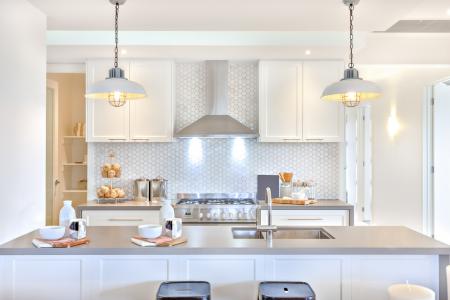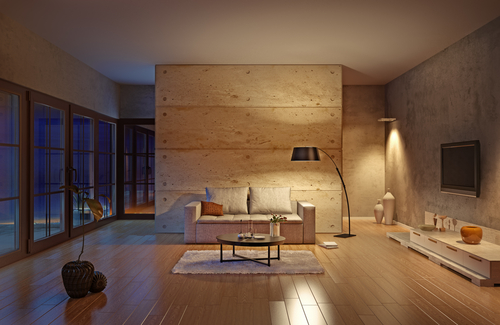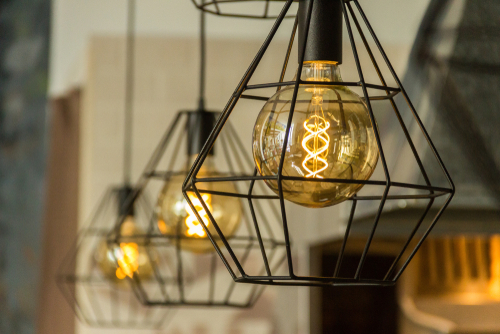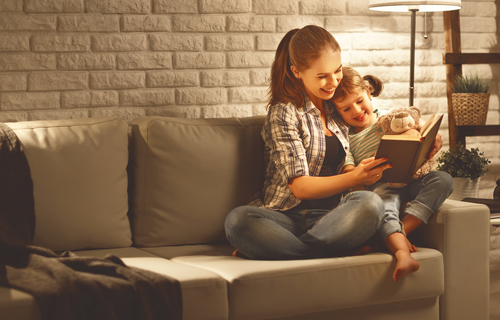
Enhance Your Living Space With a Flip of a Switch!
Light is a marvelous interior design tool. As a homeowner, you can use it to express your personality, set a mood, enhance your enjoyment of living spaces, and much more.
Beyond improving a home’s natural light, there are dozens of ways to boost interior spaces with lighting effects. It just requires a little imagination and a basic understanding of design techniques.
Light expands space. This is why small spaces can appear more substantial with the addition of bright lighting, light colors, and surfaces that reflect light, like mirrors. Likewise, dark colors and muted light sources can visually shrink a too-large space, making it feel cozier.
How can you bring lighting strategies into your home, like a pro?
Showcase Your Favorites
Light can also be used to direct someone’s attention because we automatically notice bright objects over darkened corners.
Photographers and artists frequently play with light to draw our eyes across their images in an intentional sequence, using light and shadows to focus our attention here, then there.
How can you employ this technique in your home?
Imagine walking into a room where a light shines on a framed painting, while the rest of the room is dimly lit. Will the painting appear to have special significance? Apparently, yes.

“Throwing a little light” on any object elevates its importance in the same way the star of a theatrical performance gets the spotlight.
For example, if you want to make your favorite fiddle-leaf fig tree more visually prominent, throw a spotlight on it—either a canned light that illuminates the leaves from below or a directional light from above that highlights its shiny leaves.
Or, go old school and wrap the tree with tiny white lights. Any of these techniques will be attention-getting.
Change the Mood
Creative lighting choices also alter a room’s atmosphere. For example, imagine a room with dozens of candles. Now imagine the same space, but replace the candles with strobe lights. It’s a significant shift in mood.
The intensity of light, as well as where the light falls on the color spectrum, changes the way a room “feels” when you are in it.
Blue-white, super-bright lights feel more sterile and powerful, whereas soft golden and lower-wattage lights bring warmth, relaxation, and a sensual mood to a room. (There’s a reason candlelight is considered romantic.)
When selecting a bulb, pay attention to where it falls on the color spectrum. Popular lighting options now include Edison-style bulbs, halogen bulbs, and LED bulbs, with substantial differences in color quality and energy efficiency.

Vintage style Edison bulbs provide warm yellow light, although you may need a lower-wattage version to achieve a genuinely soft glow. (Or install a dimmer switch.)
LEDs, on the other hand, are now available at every point on the warm-to-cool Kelvin scale of color temperatures—and in differing degrees of brightness.
Divide and Define
Beneficial lighting design in your home is about more than setting a mood and creating dramatic visual effects. Lighting also plays an essential supporting role in making spaces more functionally enjoyable.

Use lighting to subdivide a room into different purposes, such as visiting and relaxing, managing paperwork, or curling up with a good book.
Effective lighting design is particularly important in kitchens, where it must be visually attractive while also supporting various tasks. Under-cabinet lighting, island pendants, ceiling downlights, and track lighting all play vital roles.
Lighting decisions go far beyond selecting a style for a single overhead fixture. The way lighting is employed throughout your living spaces will impact every aspect of how your home looks, feels, and functions.
